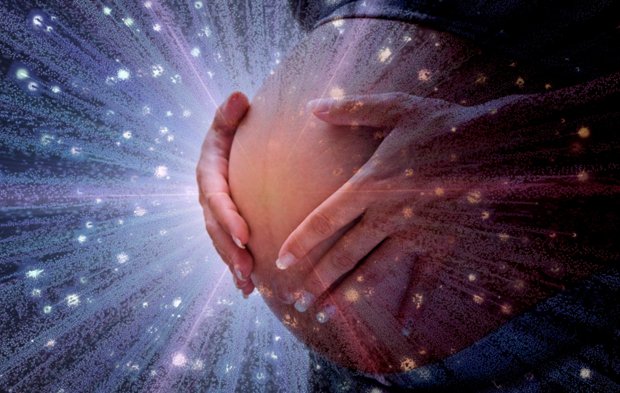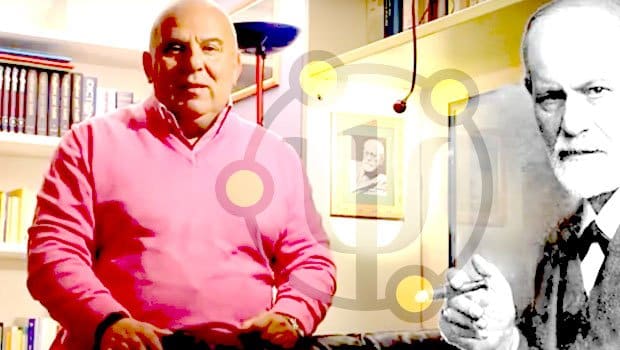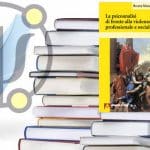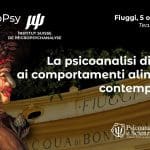Translated by Bruna Marzi
Since 1972, thanks to Nicola Peluffo’s, professor of Dynamic Psychology at the University of Turin, pioneer studies, it has been supposed the existence of a complex intra-uterine psychic life.
At the beginning his ideas have met a very strong opposition in the academic world. At last nowadays they have started to be unanimously accepted and they have also found experimental confirmation.
In his book “Micropsicoanalisi dei processi di trasformazione “ (Micropsychanalysis of transforming processes) 1, Peluffo has analysed the complicated immune reactions that take place in mother-foetus unity and has tried to understand how becomes possible the only exception to the rule of istocompatibility.
As everybody knows our organism is protected from external aggressions by a complicated overseeing system, the immune system, which is due to avoid the invasion of genetically foreign matter. Our body has a very sophisticated self representation and it is able to make comparison among the biological entity it gets in contact with. Whenever these entities contain istologicaly non compatible matter, the immune system reacts by destroying and eliminating the unknown entity.
It is well known that the foetus, since the cellular stage, contains genetic matter of father’s origin, absolutely non compatible with mother’s organism. Nevertheless the mother is able to accept and harmonize the foreign matter carried by father’s spermatozoa, while, for example, she would have a strong rejection reaction in case of transplantation of any other genetic matter of the same origin (father’s origin).
Moreover, in perfect agreement with Silvio Fanti considerations, Peluffo has advanced the hypothesis that psychic events which take place in uterus, mark the psychism of the future baby by shaping the structuration of his psychism and having influence on his psychobiological destiny:” On the biological level war declaration accurs when mother’s immune system breaks out against father’s genetic invasor. Thousands of spermatozoa, with their father’s genetic war-head have died trying to get close to the ovule, the survivor unloads his material and from that moment on, the outcomming product, that will be the embryo-foetus, will have the war inside himself. I believe that such fact puts the embryo-foetus in an everlasting precariousness condition. A continuous perturbation of the inertia principle which will be perceived, when the psychobiological development will make it possible, as an experience of imminent end. It is possible to find such psychic experience in children and adult dreams….How many anxiety dreams carry this feeling of imminent end, represented by the experience of breathing interruption or by it’s contrary, the aspiration in an endless hole?”. 2
In a different session I have described a clinical case 3 of a young psychotic man whose delirious phantasies of body deformation perfectly corresponded to his mother’s invasion experiences during pregnancy: psychobiological conflict had framed evident marks. The psychotic who mainly lives in the primary process (on definition outside space and time and characterized by a free displacement of energy among representations), once he has grown-up, is still immersed in the foetus body shaping process, he can’t successfully metabolize tension surplus. With regards to intra-uterine life Manuel Tartari writes:” Let’s try to imagine a human being all sensitivity and motility, who perceives rough chemical , sensorial changes, any mother’s sharp movement, modifications of mother’s heart-throbs, blood inflow, nourishment and adrenaline flow. Probably he’ll register such events as stop. These events will cause scars on the border between somatic functions (breathing, blood circulation, ecc.) and nervous functions; a pre psychic memory which contains tracks of the perturber event. When the development will make possible a mental transformation of all this, there will be an unconscious nucleous of representations and affects that will try to elaborate the suffered perturbation, which means to shape it” 4.
In each micropsychoanalysis in adults’ analytic material, we can regularly find confirmation of intra-uterine traumatic experiences; length of the session ( on average three hours) allows a real recovery of such experiences, without the use of interpretation, during repeated dream interpretation.
However, recently new and original researches, based on the adaptation of infant Observation to ecographic registration of foetus activity, have brought experimental confirmations. Alessandra Piontelli has described these studies saying:” My researches have put in light an important continuity on certain aspects of pre- and after-birth life. Each foetus has individual development characteristics which…continue during after-birth life…Each observed foetus had a different personality…such that they were considered as children with a temperament that allowed prevision on their future”. 5
It is very possible that in the near future, when iconic registration techniques of foetus activity will reach the movie quality, it will be possible to utilize such material as a very strong and incontrovertible associating inductor during the analytic session.
Written by: Quirino Zangrilli © Copyright
NOTE:
1 – Peluffo N., Micropsicoanalisi dei processi di trasformazione, Books’ Store, Torino, 1976.
2 – Peluffo N., Elaborazioni oniriche dei derivati di fissazioni utero-infantili, Bollettino dell’Istituto Italiano di Micropsicoanalisi, n° 17, 1994.
3 – Zangrilli Q., La strutturazione dell’idea delirante, Bollettino dell’Istituto Italiano di Micropsicoanalisi, Primo semestre 1986.
4 – Tartari M., La vita intrauterina, Il Modello micropsicoanalitico, Bollettino dell’Istituto Italiano di Micropsicoanalisi, n° 27-28, 2000.
5 – Piontelli A., From Fetus to Child, Tavistock/Routledge, London, 1992.
Nel 2024 riceve il Premio Accademico d’Onore della Accademia Culturale Internazionale Cartagine 2.0.
Doctor Quirino Zangrilli was born in Fiuggi in 1955. Graduated with honours in Medicine and Surgery in 1980, he practices Psychoanalysis, with intensive method, since 1982. He is author of 72 scientific pubblications. He has attended as speaker or president of session to many national and international scientific Conventions. His book “La vita:involucro vuoto” (Life: empty involucre), published by Borla in 1993, has been in use by the Chair of Dynamic Psychology at Turin’s University since 1994. He is the author and founder of the multimedia review “Psicoanalisi e Scienza” (Psychoanalysis and Science), the most read Italian on line review of psychoanalysis. In 2012 he participated as a Speaker at the Scientific Festival of BergamoScienza. In 2013 he illustrated his research on the maternal-fetal interaction in the Special Session of the XI World Congress of Perinatal Medicine in Moscow with his relation “Intrauterine Imprinting”. He is visiting teacher at Moscow Institute of psychoanalysis and training psychoanalist of Swiss Institute of Micropsychoanalysis.
In 2024 he received the Honorary Academic Award of the Carthage 2.0 International Cultural Academy
Le Le Docteur Quirino Zangrilli est né à Fiuggi en 1955. Diplômé avec mention en Médecine et Chirurgie en 1980, il pratique la psychanalyse depuis 1982, en utilisant une technique intensive. Il est l’auteur de 72 livres et publications scientifiques. Il a participé en tant que conférencier ou président de session à de nombreuses conférences scientifiques nationales et internationales. Son livre “La vie : enveloppe vide”, publié par Borla en 1993, est adopté depuis 1994 par la Chaire de Psychologie Dynamique de l’Université de Turin. En 1994, il a reçu le “Prix national Ciociaria de médecine”. Il a conçu et fondé le magazine multimédia “Psicoanalisi e Scienza”, qui est le magazine de psychanalyse en ligne en italien le plus suivi au monde. (Source : Entireweb, Alexa, Google, Virgilio, Arianna., etc.). En 2012, il a participé en tant que conférencier à la colloque scientifique de BergamoScienza. En 2013, il a exposé ses études sur l’interaction materno-fœtale lors de la session spéciale du XIe Congrès mondial de médecine périnatale à Moscou avec le rapport “Intrauterine Imprinting”. Il est chargé d’enseignement au cours de spécialisation de trois ans en psychanalyse, psychothérapie psychanalytique et consultation psychanalytique à l’Université de Moscou. Il est membre didacticien de l’Institut Suisse de Micropsychanalyse et de la Commission pour la Pratique de celui-ci.
En 2024, il reçoit le Prix Académique Honoraire de l’Académie Culturelle Internationale Carthage 2.0.
В 2024 был награжден Почетной академической премией Академии Международной Культуры «Карфаген 2.0».














